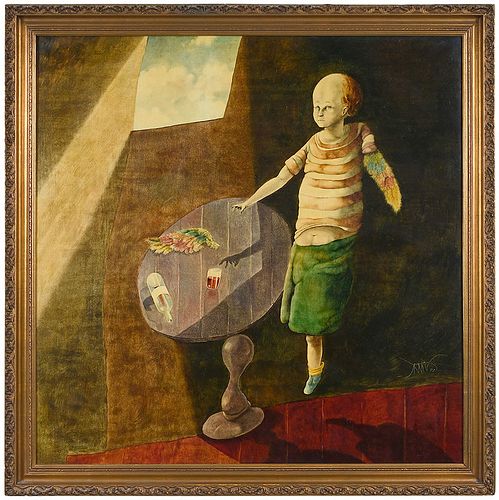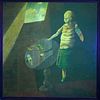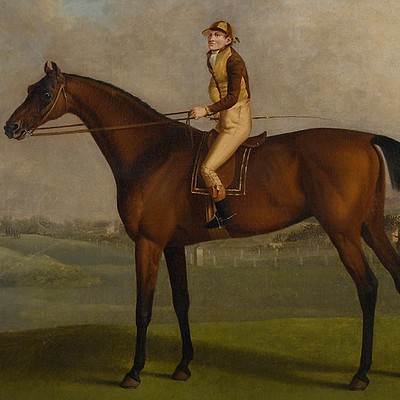Benjamin Cañas
About Seller
PO Box 2135
Asheville, NC 28802
United States
Based in Asheville, North Carolina, Brunk Auctions has been conducting sales of fine and decorative arts for over 30 years. Auctions are held in our North Carolina sale room but attracts a global audience. Founded by Robert Brunk in 1983, the auctions became well known for their integrity and profes...Read more
Two ways to bid:
- Leave a max absentee bid and the platform will bid on your behalf up to your maximum bid during the live auction.
- Bid live during the auction and your bids will be submitted real-time to the auctioneer.
Bid Increments
| Price | Bid Increment |
|---|---|
| $0 | $25 |
| $100 | $50 |
| $1,000 | $100 |
| $2,000 | $200 |
| $3,000 | $250 |
| $5,000 | $500 |
| $10,000 | $1,000 |
| $20,000 | $2,000 |
| $50,000 | $5,000 |
| $100,000 | $10,000 |
About Auction
May 16, 2020
Session II: Premier Auction - Lots 975 - 1433 Saturday, May 16, 2020 Auction Begins | 9:00AM EST Bidding by telephone, absentee bid, or on one of our online platforms Continental, British, Thomas Jefferson Foundation, Private Florida Collection, Modern, American, Estate of William A. Little, Brunk Auctions support@brunkauctions.com
- Lot Description
(Salvadoran, 1933-1987)Icaro (Icarus), 1977, signed lower right and dated, oil on panel, 46-1/4 x 46-1/8 in.; modern gilt wood frame, 52-1/2 x 52-1/8 in.Exhibited: XIV Bienal Internacional,˜S?o˜Paolo, Brasil,˜Exposici›n Antol›gica˜(Restropectiva) de Benjamin˜Ca?as, 1977, No.32 (labels verso)Biography from the Museum of the Americas, OAC:"Benjamn Ca?as was born in Honduras and grew up in El Salvador, where he earned a degree in architecture from the Universidad Aut›noma. Throughout the 1950s and 1960s he earned a living as an architect, working for the city?s Department of Public Works and a variety of local firms. During the years 1957-1969 he studied at the Escuela de Bellas Artes de El Salvador with teachers Enrique Salaverria, C?sar Serme?o, and Benjamn Saul. Ca?as?s first solo exhibition took place in the art gallery of the Intercontinental Hotel in San Salvador in 1964. His paintings from this period consisted of lyrical abstractions, where subtle fields of color intermingle with small gestural forms that evoke figures. In 1969 he became chair of the Department of Fine Arts at the Universidad Aut›noma and had his second solo show at the Galera Dideco in the city. By the end of the year he had relocated to Washington, D.C., where he worked as an architect for Watergate Improvement and Associates. At this time Ca?as met the curator Jos? G›mez Sicre, who invited him to exhibit at the OAS the following year; he showed twelve drawings and eight oils, including major works such as La creaci›n del tiempo and ?ngeles Mayas, and his work began to receive international attention. Between 1969 and 1972 his work entered his ?Mayan? period due of his use of mythology and compositional structures derived from the pre-Columbian culture. By 1973 Ca?as had discarded the Mayan-influenced work and moved on to a more precise, quasi-surreal exploration of the figure, within which the letters of Franz Kafka to his various love interests became a source of inspiration. Distorted figures, miniature animals, and stage-like settings filled his compositions, which evoked existential pursuits and sexual tensions. He lived and worked in Annandale, Virginia until his death on December 8, 1987. In 1989 the Museum of Modern Art of Latin America (OAS) organized a retrospective of his work."˜Provenance: Estate of James Benjamin Mayberry, Tryon, North CarolinaNote: Exhibited: XIV Bienal Internacional,˜S?o˜Paolo, Brasil,˜Exposici›n Antol›gica˜(Restropectiva) de Benjamin˜Ca?as, 1977, No.32 (labels verso)Biography from the Museum of the Americas, OAC:"Benjamn Ca?as was born in Honduras and grew up in El Salvador, where he earned a degree in architecture from the Universidad Aut›noma. Throughout the 1950s and 1960s he earned a living as an architect, working for the city?s Department of Public Works and a variety of local firms. During the years 1957-1969 he studied at the Escuela de Bellas Artes de El Salvador with teachers Enrique Salaverria, C?sar Serme?o, and Benjamn Saul. Ca?as?s first solo exhibition took place in the art gallery of the Intercontinental Hotel in San Salvador in 1964. His paintings from this period consisted of lyrical abstractions, where subtle fields of color intermingle with small gestural forms that evoke figures. In 1969 he became chair of the Department of Fine Arts at the Universidad Aut›noma and had his second solo show at the Galera Dideco in the city. By the end of the year he had relocated to Washington, D.C., where he worked as an architect for Watergate Improvement and Associates. At this time Ca?as met the curator Jos? G›mez Sicre, who invited him to exhibit at the OAS the following year; he showed twelve drawings and eight oils, including major works such as La creaci›n del tiempo and ?ngeles Mayas, and his work began to receive international attention. Between 1969 and 1972 his work entered his ?Mayan? period due of his use of mythology and compositional structures derived from the pre-Columbian culture. By 1973 Ca?as had discarded the Mayan-influenced work and moved on to a more precise, quasi-surreal exploration of the figure, within which the letters of Franz Kafka to his various love interests became a source of inspiration. Distorted figures, miniature animals, and stage-like settings filled his compositions, which evoked existential pursuits and sexual tensions. He lived and worked in Annandale, Virginia until his death on December 8, 1987. In 1989 the Museum of Modern Art of Latin America (OAS) organized a retrospective of his work."˜˜good condition
Condition
- Shipping Info
-
For regional auctions, purchased items not picked up in Richmond by noon on Sunday will then be returned to our Asheville location auction facility within ten business days of the auction will be assessed a storage fee of $5.00 per day, per item. Purchaser agrees that packing and shipping is done at the purchaser's risk and that the purchaser will pay in advance all packing expenses, materials, carrier fees and insurance charges. At our discretion, items will either be packed by an agent such as a packaging store or Brunk Auctions. Please allow two weeks for shipping after payment is received. Shipment of large items is the responsibility of the purchaser. We are happy to provide names of carriers and shippers if a purchaser so requests. Brunk Auctions will have no liability for any loss or damage to shipped items.
-
- Buyer's Premium



 EUR
EUR CAD
CAD AUD
AUD GBP
GBP MXN
MXN HKD
HKD CNY
CNY MYR
MYR SEK
SEK SGD
SGD CHF
CHF THB
THB



















